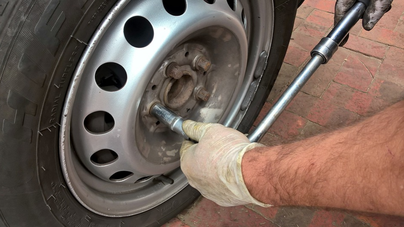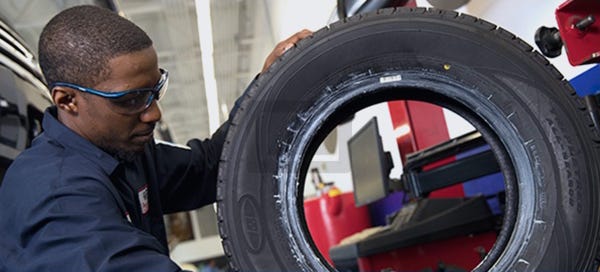Morris Tires: Your Location for GMC Tires Service Quality
Morris Tires: Your Location for GMC Tires Service Quality
Blog Article
Tire Service: The Effect of Climate Condition
When it comes to guaranteeing ideal performance and safety and security when driving, understanding the influence of climate problems on tire solution is important. From scorching heat to icy roads, each climate element can considerably affect tire functionality and total driving experience. By diving into the impacts of varying weather problems on tires, drivers can get valuable insights that might improve their car's performance and durability. In this discussion, we will certainly check out the intricate connection between climate conditions and tire service, clarifying the significance of weather-specific tire upkeep practices and factors to consider.
Warm and Tire Efficiency
When exposed to high temperatures, tires experience adjustments in efficiency that can considerably affect lorry safety and handling. The warm generated from prolonged driving or hot weather condition conditions creates the tire rubber to soften, leading to decreased tread life and raised wear.

Cold Weather Condition Impacts
Cold weather problems can have a considerable influence on tire performance and security. In cold weather condition, tires might likewise shed air stress much more quickly, which can affect taking care of and gas performance.
To reduce the results of cool climate on tires, it is critical to on a regular basis check tire stress and inflate them to the supplier's suggested levels. Using winter or all-season tires developed for winter problems can additionally boost traction and grip on icy or snowy roadways. Proper tire maintenance, consisting of regular evaluations for wear and damages, becomes much more vital throughout chillier months to guarantee ideal performance and security.
Rainy Conditions Influence
Tires with damaged footsteps are a lot more susceptible to hydroplaning, where a layer of water builds up in between the road and the tire surface area, leading to loss of traction. To battle this, motorists need to frequently inspect their tires for adequate step depth and think about spending in tires especially created for wet problems.
Furthermore, stormy weather can also lower exposure, making it challenging for drivers to see the road ahead clearly (GMC Tire Service). In such problems, it is crucial to change driving speeds as necessary and preserve a safe complying with range to permit for sudden stops. Correctly filled with air tires can also help in keeping control on wet roads by giving much better handling and grip
Snow and Tire Security
When driving in snowy conditions, having the best tires can make a significant difference in safety and efficiency. Winter months tires are made with special rubber compounds and tread patterns to give better traction on snow and ice compared to all-season tires.

It is essential to follow producer directions when installing and using tire chains to protect against damage to the tires and lorry. By picking the appropriate tires, maintaining appropriate inflation, and considering added traction aids like tire helpful site chains, drivers can boost their security when browsing snow-covered roadways.
Weather-Related Tire Upkeep
When faced with different weather condition problems, correct tire upkeep becomes a critical facet of vehicle safety and security and performance. Weather-related tire upkeep encompasses a series of practices focused on making sure optimum tire function and durability in various climate scenarios. One vital element of weather-related tire upkeep is tire pressure regulation. Changing temperatures can trigger tire stress to differ, influencing traction and fuel effectiveness. Frequently checking and adjusting tire stress according to manufacturer recommendations is necessary for safe driving in changing weather. Additionally, tire walk depth plays a substantial function in dealing with various weather condition elements. Tires with appropriate step deepness offer much better hold on wet or icy roads, minimizing the threat of skidding or hydroplaning. When walk wear reaches a specific depth is vital for maintaining traction and stability in adverse weather, inspecting tire tread routinely and replacing tires. By focusing on weather-related tire maintenance, motorists can boost safety and security, improve lorry performance, and lengthen the life-span of their tires.
Verdict
In conclusion, climate problems description have a substantial impact on tire performance and safety. From warm affecting tire pressure and use to chilly weather decreasing traction, it is essential to think about the weather when keeping and making use of tires.
In this discussion, we will check out the detailed relationship between climate conditions and tire solution, shedding light on the value of weather-specific tire upkeep methods and considerations.

Report this page